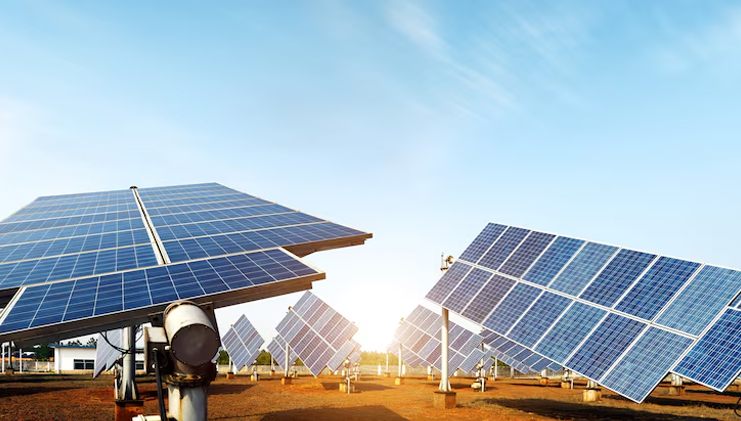
On-Grid vs Off-Grid Solar Systems: Which One Is Right for You?
Solar energy has emerged as one of the most sustainable and cost-effective ways to power homes, businesses, and communities. However, when considering solar power for your property, you'll likely come across two main types of solar systems: on-grid and off-grid. Both systems have their advantages and are suitable for different needs, depending on your location, energy goals, and budget. Let’s explore the key differences between these two types of solar systems to help you make an informed decision.
What is an On-Grid Solar System?
An on-grid solar system, also known as a grid-tied system, is directly connected to the electricity grid. The electricity generated by your solar panels is used to power your home or business. If there is any excess energy, it is sent back to the grid. In return, you may receive credit from your electricity provider, a concept known as net metering.
Key Features of an On-Grid System:
Connection to the Grid
Your system is tied to the local utility grid. Any energy generated beyond your home’s consumption is fed back to the grid.
No Battery Backup
On-grid systems don’t require batteries. Instead, they rely on the electricity grid to supply power when your solar panels aren’t producing enough electricity (such as during the night or on cloudy days).
Energy Credits or Net Metering
Excess energy produced by your system gets sent to the grid, and you receive energy credits, reducing your overall electricity bill.
Lower Initial Cost
Since there is no need for battery storage, the cost of installing an on-grid solar system is usually lower compared to off-grid systems.
What is an Off-Grid Solar System?
An off-grid solar system operates independently of the electricity grid. It’s designed for areas where grid connection is either not available or unreliable. These systems include batteries to store the excess energy generated by the solar panels so that you can use it later when the sun isn’t shining or during power outages.
Key Features of an Off-Grid System:
Independence from the Grid
Off-grid systems don’t require a connection to the grid. They’re completely self-sufficient and can provide power in remote areas or places with unreliable grid access.
Energy Storage with Batteries
Since these systems aren’t connected to the grid, they need batteries to store the excess energy produced during the day, which is then used at night or during cloudy periods.
Higher Initial Cost
Off-grid systems tend to be more expensive to install because of the added cost of batteries and more complex components required to manage power storage and distribution.
No Energy Credits
Unlike on-grid systems, off-grid systems don’t allow you to earn credits for excess energy because there’s no connection to the electricity grid.
Key Differences Between On-Grid and Off-Grid Solar Systems
| Feature | On-Grid Solar System | Off-Grid Solar System |
|---|---|---|
| Grid Connection | Connected to the electricity grid | Independent of the grid |
| Energy Storage | No storage, relies on the grid for backup | Requires batteries to store excess energy |
| Backup Power | No backup during power outages (unless paired with a backup generator) | Power backup is available, provided by stored energy |
| Feature | On-Grid Solar System | Off-Grid Solar System |
|---|---|---|
| Cost | Lower initial cost (no batteries needed) | Higher initial cost (includes batteries and charge controllers) |
| Energy Credits | Earn credits for excess energy sent back to the grid | No energy credits, all excess energy is stored in batteries |
| Suitability | Ideal for areas with reliable grid power and net metering | Best for remote locations with no or unreliable grid access |
| Maintenance | Lower maintenance, as no batteries are involved | Requires regular maintenance of batteries |
Which System Is Right for You?
On-Grid System: Best for Urban and Suburban Areas
An on-grid solar system is an ideal choice for homeowners or businesses located in urban or suburban areas where grid power is reliable. If you have access to net metering, you can reduce your electricity bills by sending excess power to the grid, which is an excellent incentive for reducing costs. Additionally, on-grid systems have lower upfront costs, making them a more affordable option for many homeowners.
On-grid systems are perfect for:
- Urban homes or businesses
- Areas with reliable grid access
- Homeowners looking for a simple, low-maintenance solution
- People interested in net metering to reduce their electricity costs
Off-Grid System: Best for Remote Locations
An off-grid solar system is perfect for people living in rural or remote areas where the grid is either unavailable or unreliable. These systems offer total energy independence and ensure you have power at all times, even during grid outages. However, the higher cost of installation, including the batteries and additional components, should be considered before making the switch.
Off-grid systems are best for:
- Rural or remote locations without grid access
- Areas with frequent power outages
- People who prioritize complete energy independence
- Homeowners who want to store and use all of their solar energy
Conclusion
Choosing between an on-grid and off-grid solar system depends largely on your specific needs and location. If you live in a city or suburban area with reliable grid access and are looking for a cost-effective solution, an on-grid system might be the right choice. On the other hand, if you live in a remote area or want to completely disconnect from the grid, an off-grid system provides the autonomy and energy security you need.
Whichever option you choose, both on-grid and off-grid solar systems offer significant benefits, including reduced electricity bills, lower environmental impact, and long-term energy savings. As solar technology continues to improve, both systems are becoming more accessible and affordable for homeowners across India, contributing to the country’s move towards clean, sustainable energy.

